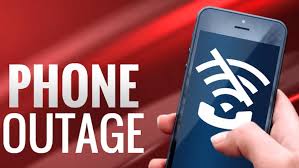01:01:01 pm 02/23/2024
Viewed: 7816
Understanding the Unrelated Nature of Recent T-Mobile and AT&T Outages
In recent days, customers across the United States experienced service disruptions from two major cellular service providers: T-Mobile and AT&T. Despite the timing, a closer examination reveals that these outages were distinct in nature, caused by different factors, and thus not related.
T-Mobile's Service Disruption
T-Mobile users began reporting issues late on a Monday, with the number of outage reports peaking at over 83,000 by around 10:20 p.m. ET, according to Downdetector.com. This disruption affected voice, messaging, and data services across several areas. T-Mobile's President of Technology, Neville Ray, identified the cause as a "3rd party fiber interruption issue," indicating a problem with a fiber link provided by a third-party supplier. This specific cause points to a technical failure external to T-Mobile's direct network infrastructure but nonetheless impactful enough to disrupt services significantly
.
AT&T's Network Outage
Simultaneously, AT&T customers also faced a network outage that began around 3:30 a.m. ET, with Downdetector noting a peak of around 73,000 reported incidents. The disruption spanned across the United States, affecting locations including Houston, Atlanta, and Chicago. By 3:30 p.m. ET on the same day, the reports had dramatically decreased, indicating the company's swift action to restore service. AT&T stated that they had restored wireless service to all affected customers, though the specific cause of the outage was not detailed in the same way as T-Mobile's
.
Why They Are Not Related
Despite the apparent coincidence in timing, there are clear distinctions between the two outages:
Different Causes: T-Mobile's disruption was specifically attributed to a third-party fiber interruption, a clear and identifiable cause. In contrast, AT&T did not publicly specify the cause of their outage, making it difficult to draw any direct correlation between the two incidents.
Isolated Responses: Both companies managed their outages independently, with T-Mobile addressing a third-party fiber issue and AT&T working to restore service without indicating any external dependency.
Lack of Shared Infrastructure Indication: There was no indication that the two outages were due to a shared infrastructure component. The telecommunications industry often utilizes distinct network infrastructures and third-party services, further reducing the likelihood of a shared cause.
In addition to T-Mobile and AT&T, Verizon also experienced a service disruption due to a fiber issue in the network's core, causing intermittent call failures. This issue was swiftly identified and resolved. Unlike the T-Mobile and AT&T incidents, Verizon's outage was specific to its network, reinforcing the notion that recent telecommunications disruptions are unrelated and stem from distinct causes. This highlights the complexity of maintaining robust network infrastructures and the importance of rapid response mechanisms to ensure minimal service downtime.
Conclusion
The recent outages experienced by T-Mobile and AT&T customers, while occurring in a similar timeframe, were the result of different issues. T-Mobile faced a technical problem related to a third-party fiber link, whereas AT&T dealt with a widespread outage without a publicly detailed cause. Without direct evidence linking these incidents, they stand as separate events, each managed and resolved by the respective companies. The coincidence of timing does not imply a connection between the two, underscoring the complex nature of telecommunications infrastructure and the myriad factors that can lead to service disruptions.
This analysis underscores the importance of robust network management and the rapid response mechanisms that carriers must employ to minimize service downtime, ensuring communication remains uninterrupted for their customers.
In recent days, customers across the United States experienced service disruptions from two major cellular service providers: T-Mobile and AT&T. Despite the timing, a closer examination reveals that these outages were distinct in nature, caused by different factors, and thus not related.
T-Mobile's Service Disruption
T-Mobile users began reporting issues late on a Monday, with the number of outage reports peaking at over 83,000 by around 10:20 p.m. ET, according to Downdetector.com. This disruption affected voice, messaging, and data services across several areas. T-Mobile's President of Technology, Neville Ray, identified the cause as a "3rd party fiber interruption issue," indicating a problem with a fiber link provided by a third-party supplier. This specific cause points to a technical failure external to T-Mobile's direct network infrastructure but nonetheless impactful enough to disrupt services significantly
.
AT&T's Network Outage
Simultaneously, AT&T customers also faced a network outage that began around 3:30 a.m. ET, with Downdetector noting a peak of around 73,000 reported incidents. The disruption spanned across the United States, affecting locations including Houston, Atlanta, and Chicago. By 3:30 p.m. ET on the same day, the reports had dramatically decreased, indicating the company's swift action to restore service. AT&T stated that they had restored wireless service to all affected customers, though the specific cause of the outage was not detailed in the same way as T-Mobile's
.
Why They Are Not Related
Despite the apparent coincidence in timing, there are clear distinctions between the two outages:
Different Causes: T-Mobile's disruption was specifically attributed to a third-party fiber interruption, a clear and identifiable cause. In contrast, AT&T did not publicly specify the cause of their outage, making it difficult to draw any direct correlation between the two incidents.
Isolated Responses: Both companies managed their outages independently, with T-Mobile addressing a third-party fiber issue and AT&T working to restore service without indicating any external dependency.
Lack of Shared Infrastructure Indication: There was no indication that the two outages were due to a shared infrastructure component. The telecommunications industry often utilizes distinct network infrastructures and third-party services, further reducing the likelihood of a shared cause.
In addition to T-Mobile and AT&T, Verizon also experienced a service disruption due to a fiber issue in the network's core, causing intermittent call failures. This issue was swiftly identified and resolved. Unlike the T-Mobile and AT&T incidents, Verizon's outage was specific to its network, reinforcing the notion that recent telecommunications disruptions are unrelated and stem from distinct causes. This highlights the complexity of maintaining robust network infrastructures and the importance of rapid response mechanisms to ensure minimal service downtime.
Conclusion
The recent outages experienced by T-Mobile and AT&T customers, while occurring in a similar timeframe, were the result of different issues. T-Mobile faced a technical problem related to a third-party fiber link, whereas AT&T dealt with a widespread outage without a publicly detailed cause. Without direct evidence linking these incidents, they stand as separate events, each managed and resolved by the respective companies. The coincidence of timing does not imply a connection between the two, underscoring the complex nature of telecommunications infrastructure and the myriad factors that can lead to service disruptions.
This analysis underscores the importance of robust network management and the rapid response mechanisms that carriers must employ to minimize service downtime, ensuring communication remains uninterrupted for their customers.
No video exists.





Comments